Graham Reid | | 6 min read
Tambourine
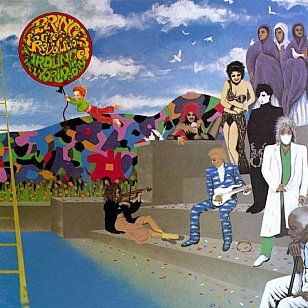
Even before he was cremated a few days after his death, the world was abuzz with how much previously unreleased music Prince Rogers Nelson – aka Prince – had left behind.
Those who had seen it spoke of a massive vault of recordings and, tantalisingly, among them were probably the sessions he did with Miles Davis.
That said, the reason they remained in Prince's vault was because when it came to the track Can I Play With U which Prince sent to Davis for him to add to, the Purple One didn't think the result worked.
Later Prince sent Davis eight more incomplete tracks, three of which -- Penetration, A Girl and Her Puppy and Jailbait -- Davis would play live. But it seems they all remained incomplete . . . and maybe those aren't even in Prince's vault.
Given Prince released so much music in his lifetime – 39 studio albums in 38 years — it might be fair to say not everything in his lock-up would be complete, or at least finished to his satisfaction.
Or even any good.
Whether he would want them released now or at some time in the future is a matter of great conjecture . . . but if the ever-expanding Jimi Hendrix catalogue is any indicator, that matter is well and truly out of his wishes. Despite what he might have written in any will.
What is beyond doubt though is the absurdly prolific Prince – U2 have made only 13 studio albums in 35 years for example — made music because he had to . . . and because he could.
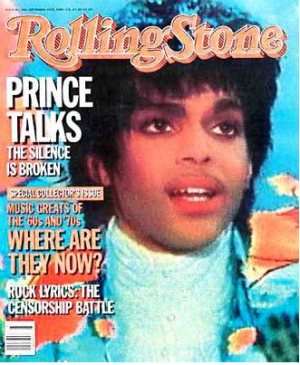 With his own Paisley Park studio just a
short amble from his home in the same complex in Minneapolis, he
could work for uninterrupted hours at a time.
With his own Paisley Park studio just a
short amble from his home in the same complex in Minneapolis, he
could work for uninterrupted hours at a time.
In a Rolling Stone interview in late '85, he spoke of being in the studio for 20 hours at a stretch, and – because he was a multi-instrumentalist – he could just keep creating songs outside of whatever bands and fellow musicians he was using.
There's a case to be made – and it was certainly made by his record label Warners in the early Nineties when he delivered three albums to them in one year – that Prince released too much music.
It is true.
How many fans weeping on-line now could name his last four albums (Plectrumelectrum and Art Official Age in 2014, HitNRun Phases One and Two last year) and nobody really talks about The Chocolate Album or The Slaughterhouse from 2004, do they?
The default position is always going to be to those thrilling albums in the 15 years from his debut in '78 (up until 14th studio album Love Symbol in 93) where he redefined funk, pop, dance, rock and r'n'b soul.
Not to mention sexuality and fashion and colour. (No Prince, no purple?).
If you look at what is being downloaded in the wake of his death, or the albums which are selling, they all, almost without exception, come from that period.
Sure there were genius albums beyond that purple patch ,but few of them quite captured the public's imagination in the same way.
The early Eighties to the early Nineities were his decade.
Around the World in Day of '85 might not have been Prince's best or most successful album from that period, but it is one which speaks to us of his creativity and unwillingness to conform.
And it's an odd, but oddly appealing one.
It arrived after Purple Rain and – because it was so different and he apparently ditched a “Purple Rain Part II in favour of it – the album “stands out as the most genuinely audacious decision of his career to [that] date”, according to Nick Kent writing in The Face at the end of the Eighties.
By most accounts Around the World in a Day (ATWIAD) is his “psychedelic album” or, as few at the time had it, his black-funk Sgt Peppers. He flatly denied any Beatles influence (but he would say that, wouldn't he?) but it is certainly infused with both the optimism and then cynicism of the late Sixties.
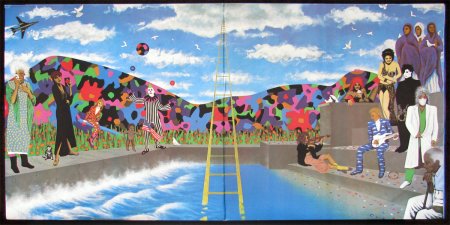 It came in a brightly gatefold sleeve
with the lyrics on the inside, the label on the record was
paisley-psyche and it opened with an Indian-sounding incense-wafting
funk-with-flute title track.
It came in a brightly gatefold sleeve
with the lyrics on the inside, the label on the record was
paisley-psyche and it opened with an Indian-sounding incense-wafting
funk-with-flute title track.
Right from the start he announced ATWIAD was not going to be more of the same to please a marketplace now hungry for archetypal Prince-hits.
In fact he told his record company Warners to not make a great to-do about it on release and that no singles should be pulled from it until the album had been out for a while. He just wanted this different music to find its place on its own.
Of course in time – just a month later – a single was pulled, the enormously popular Raspberry Beret which currently appears among the most downloaded songs since his death.
When it came to writing hits, he just couldn't help himself.
But ATWIAD is of interest beyond that classic.
Some have suggested it isn't around the world in a day, but around the Sixties in 43 minutes . . .
However he hauls that historic vibe into his present tense with the second track Paisley Park, named for his new label (and which would subsequently become the name of his famous studio complex) about which he says attracts colourful people with smiles on their faces. And over a minimalist pop beat with nods to glam-lite he sings “[The smile] speaks of profound inner peace, ask where they're going, they'll tell U nowhere, they've taken a lifetime lease on Paisley Park”.
Tambourine is slice of percussion-driven stripped-back funk – on which he plays everything – but , even by Prince's standards of sexual metaphors, it's kinda dumb, deliberately so: “I just wanna settle down and play around my baby's tambourine”.
America is a strident piece of anti-consumerism (from Prince?) and one of his – at that time – rare political statements: “Little sister making minimum wage living in a one-room monkey cage . . .”
The clean funk of the appropriately-entitled Pop Life took a poke at his own constituency however: “What's the matter with your world, was it a boy when you wanted a girl? What you puttin' in your nose, is that where your money goes? . . . Pop life, everybody needs a thrill, pop life we all got space to fill . . .”
 And the ballad The Ladder – which
opens with strings and a double-tracked delay vocal spoken word piece
– “Once upon a time in a land of Sinaplenty there lived a king
who didn't deserve to be” – initially sounds like it owes a debt
to Donovan's Atlantis before it gets all spiritual on you. (“The
king was looking for the ladder, everybody's looking for the ladder,
everybody wants salvation of the soul”.
And the ballad The Ladder – which
opens with strings and a double-tracked delay vocal spoken word piece
– “Once upon a time in a land of Sinaplenty there lived a king
who didn't deserve to be” – initially sounds like it owes a debt
to Donovan's Atlantis before it gets all spiritual on you. (“The
king was looking for the ladder, everybody's looking for the ladder,
everybody wants salvation of the soul”.
It – co-written with his father who also gets credit on the album's title track -- might also be vaguely autobiographical. It also comes with a delightfully evocative sax part by fellow-traveller Eddie Minnifield.
It's telling that after the spiritual elevation of The Ladder the album goes out with the visceral, distorted funk and pop-rock of Temptation which in some ways anticipates Sign o' the Times (the song, albeit in a more sinew and muscular version) two years later.
Unfortunately for the album it trickles to a close with this one . . . there's no crashing piano chord in the manner of Sgt Peppers, just a lazy two minute sonic circus of Prince pleading (“I'll be good”) and other such nonsense.
In many ways, Around the World in a Day doesn't deserve to be considered an Essential Elsewhere album on the basis of its music alone. There are a number of musically better and more challenging albums in Prince's vast catalogue.
But because of what it stood for – artistic freedom, a willfully disobedient artist, its sly humour and expansive nature beyond what people expected from him – it remains a fascinating oddity.
As Stuart Marconie wrote in NME in mid '89, “It's my favourite Prince album. Perplexing, lunatic, all the things the detractor claim but nevertheless a Bank Holiday Weekend of the imagination. Secular and profane, playful and intense”.
There is also romance woven through (the soulful Condition of the Heart which opens with a two minute melodramatic sonic flourish before settling into a dreamy, synth-augmented piano ballad) and that rare stab at politics (America).
Stephen Thomas Erlewine at AllMusicReview who said, “The problem is, only a handful of the songs have much substance outside of their detailed production and intoxicating performances, and the album has a creepy sense of paranoia that is eventually its undoing.”
Maybe.
But at Elsewhere we are going to side with Marconie who concluded, “An indulgence? Probably. But a wonderful, silly, special record.”
Silly?
Silly??
That's enough to make it an Essential Elsewhere album.
And in our corner we have Prince himself from that rare interview in '85, just months after this album was released.
“It's not silliness,” he said. “It's sickness. Sickness is just slang for doing things somebody else wouldn't do.”
He made a lifetime and career of that.
May his God rest his soul in that psychedelic beyond he now inhabits.
These Essential Elsewhere pages deliberately point to albums which you might not have thought of, or have even heard . . .
But they might just open a door into a new kind of music, or an artist you didn't know of. Or someone you may have thought was just plain boring.
But here is the way into a new/interesting/different music . . .
Jump in.
The deep end won't be out of your depth . . .

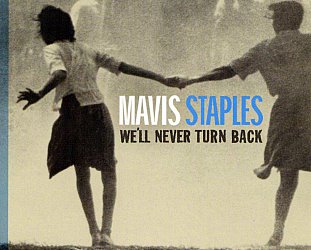



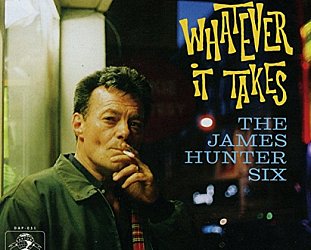
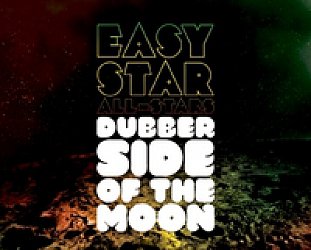
post a comment